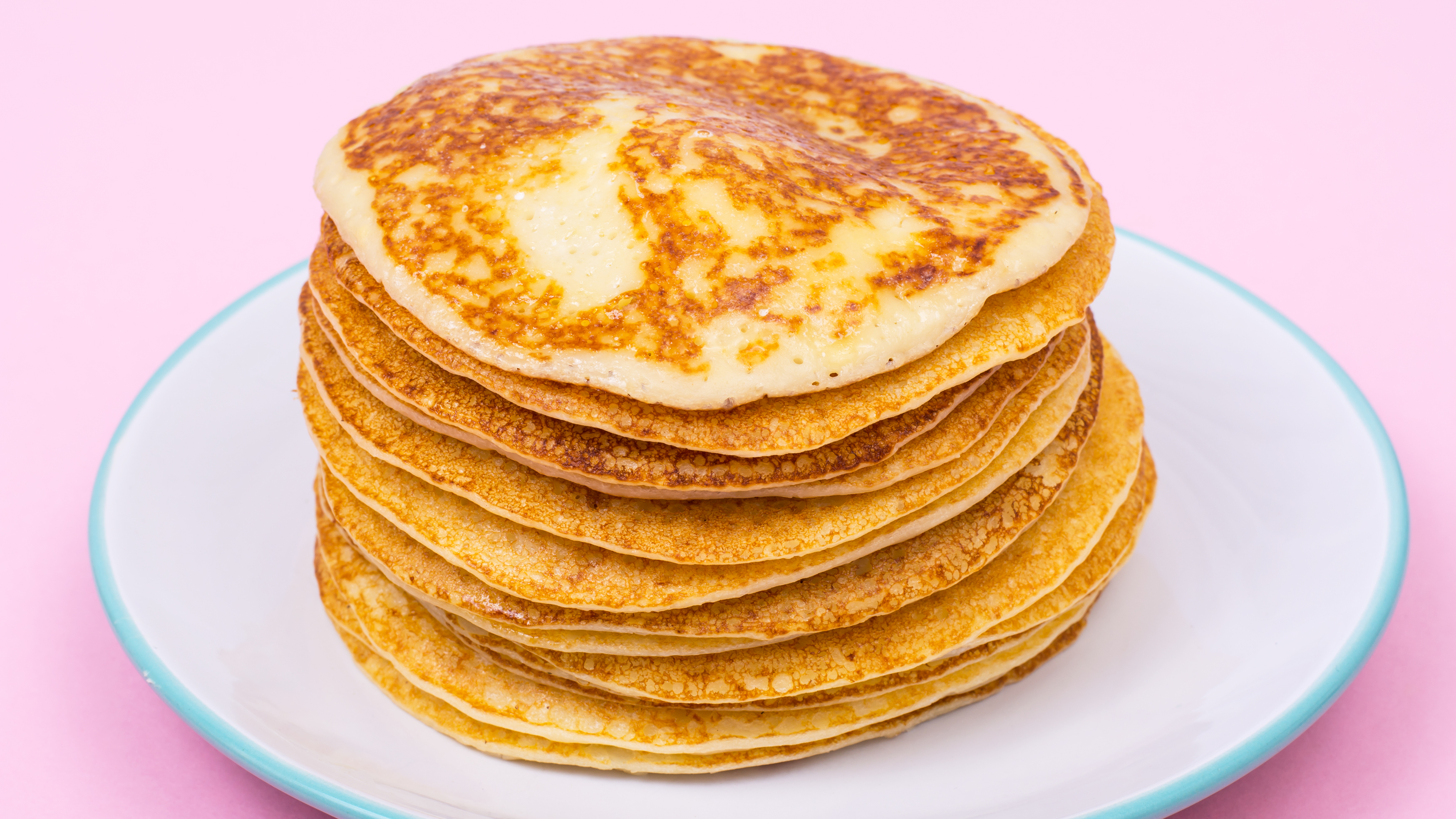Micro-Resolutions: Learning How To Flip Pancakes Once And For All
Years ago, in a previous life, I participated in a study on the aptitudes of theater artists. (Yes, I love Hamilton, and yes, I know I can't sit with you at lunch. I'm fine with that.) For the study, I took a lengthy series of aptitude tests. It was fascinating, but the single most interesting thing—nay, the most freeing thing—was learning that this one aspect of my life is not just my imagination, or the result of laziness: I have absolutely abysmal dexterity in my hands.
It was like a door opened up and birds started singing. That's why I was always so bad at most video games, tried for years to learn to play a variety of instruments with almost no success, why I'm bad at shuffling cards, painting my own nails, and knitting/sewing/crocheting/cross-stitching with any kind of ease or speed. And that is why, despite the fact that I love to cook, I have always been kind of slow, kind of sloppy, and often frustrated. It's not that I'm lazy. I just don't have the stuff! But I'd still really like the stuff, you know? I've got that obnoxious theater kid blood, I am compelled to show off.
That's why I decided to learn to do something simple but fancy-looking in the kitchen which, as an added bonus, requires less dexterity than its simpler alternative. For my micro-resolution this year (a micro-resolution being a skill we spend 15 minutes finessing, such as pour-over coffee, chopping onions, or whipping cream by hand) I decided to learn to flip a gol-darned pancake without a spatula, without the pancake landing half in the skillet, half on the stove—that's the best result I've gotten to this point in my life.
To manage this, I asked a few breakfast aficionados how they manage this feat. They all offer this piece of advice: It's less about how you do the flipping than how you start the process. Chef Mike Brewer of New Orleans-based wine pub Copper Vine suggests beginning with clarified butter: "Heat the butter, a teaspoon at best, before adding the pancake batter." Farideh Sadeghin, the Culinary Director at Munchies, stresses (via email) that timing and patience were also an important component of this stage of the process. She notes that she heats a pan over medium heat ("Slow and steady wins the race") before adding the butter, and with regard to the grease in the pan, she goes one step further than Brewer: "Butter is great to grease the pan up but butter also burns easily, so throw in a splash of neutral oil to help keep it from burning."
The type of pan is also important. Brewer and Sadeghin both advise using a non-stick pan. "I know people are scared of teflon these days," Sadeghin says, "but get a good nonstick and treat it right and it will treat you right." The heft also matters, she tells me: "Use a lightweight pan! I dare you to try with a cast-iron. It won't be fun. Unless you're a body-builder, maybe?"
Michael Moorman, co-owner of Chicago breakfast haven m.henry, says the key is to be patient with the pancakes. The chefs at m.henry don't don't flip their bliss cakes until they have lots of bubbles, both in the center and on the edges. "Our pancakes are extremely fluffy, so that's really important—and don't disturb them until they're ready to flip," he tells me (all while dealing with a breakfast rush). Brewer and Sadeghin both mention bubbles as well, and Sagedhin puts a lot of mustard on her suggestion:
I know everyone says to wait to flip when you have bubbles, but we are talking BUBBLY AF. Like, almost holes... Also, those bubbles help to ensure that your batter is pretty set, so when you DO flip it, it won't make a terrible mess everywhere.
That said, each of them also emphasize another indicator. "Swirl the pan in a circular motion so the pancake moves freely," Brewer says. Sadeghin agrees: "The pancake should glide around, like it wants to move and flip over."
But what about the actual flipping? Both Brewer and Moorman say the same thing: You just flip it. Do it with confidence, just go for it. Hesitation = failure. Okay, sure, but what if you, to use a technical term, really suck at that? Cue Sadeghin, heroically giving a person who craves specificity a dose of the good stuff:
Use both hands (eventually, you will get good enough to do it one-handed), tilt the pan forward and away from you and quickly flick your wrist. You will probably not get it on the first try. You also might. Who knows. But you know what? Practice with a cold pan and something that won't screw up your skillet, like a big old soft cookie, so that you can visibly see it flip.
Reader, I'm in her debt. It worked. If you're a person who needs a visual aid, I also found this helpful gem.
"Practice makes perfect! ... Just be careful not to burn yourself," Sadeghin advises. Brewer has one final suggestion as well: "Be patient and have some hungry kids around to eat your mistakes!"
I don't have kids, but I'm not worried. I'm just like my country, I'm young, scrappy, and hungry, I am not throwing my... cakes.
